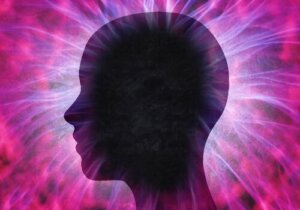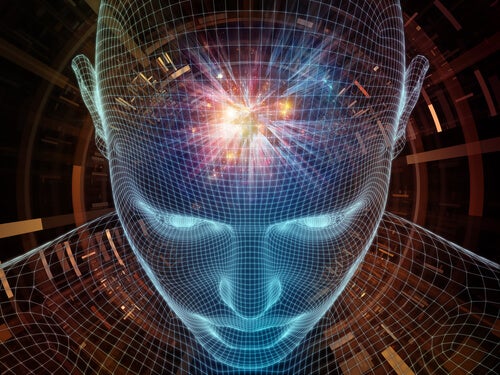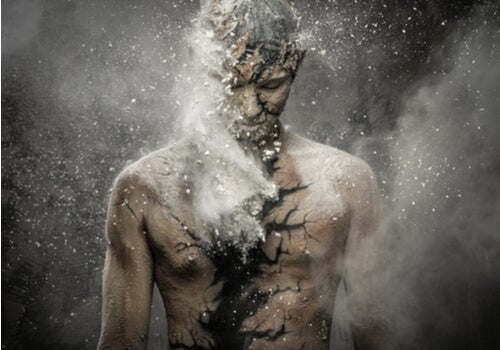The Human Aura: A Reality or Myth?

The human aura is a mysterious concept. In the popular sphere, people define it as a type of energy that surrounds the body and changes depending on different factors. Some think that it’s also like a kind of essence that can become contaminated or dirty. For them, this would explain, in part, why we have negative relationships with other people or why problems seem to follow us everywhere.
Popular beliefs state that the human aura could correspond to what we call our soul or spirit. In fact, some have claimed to see the aura detach from the body when a person dies.
These same people also believe that the human aura has a color but that this color is imperceptible to “ordinary people”. Only specially gifted people can see it, they claim. In fact, a device called the Kirlian Camera was invented to supposedly photograph the aura. Is there any truth in all of this? Is it just a myth or could there be something behind it?
“Myths are more powerful than reality.”
-Albert Camus-

The human aura
Since the times of ancient Egypt, people began to draw a kind of halo over the heads of gods and goddesses. This identified them as divine, or enlightened, beings. The tradition passed on to other cultures and that’s why many people represent Roman Catholic saints in this way.
It’s quite interesting to note that, in other distant cultures, such as that of the Aztecs in Mexico, they did the very same thing. They also represented sacred figures or important characters with this light over their heads. Does this mean that artists from different and distant peoples agreed on the reality of the halo?
The first to speak directly about the human aura was Paracelsus, in the 16th century. He said it was a sphere of fire or “igneous globe” that became more visible the more evolved a person was. In 1911, Dr. J. Kilner said he had found the way to see auras and diagnose diseases from them.
The Kirlian camera
Semyon Davidovich and Valentina Krisona Kirlian were the inventors of the famous Kirlian camera in 1939. They claimed that it was capable of photographing the human aura. They also believed that this device was the scientific proof of the existence of the aura, and which now has an updated version.
The photos taken with the Kirlian camera are images that replicate the famous crown effect around human heads. They claim this to be the aura. However, that light contour is perfectly explainable through basic physics. It’s nothing more than a reaction of the air to the application of high voltages.
The main proof that the Kirlian camera doesn’t photograph the human aura but that it generates a physical effect is the fact that, when taking the photos in a vacuum, the well-known corona effect doesn’t appear. In bother words, no aura or anything like it appears.
Truths and lies
In 1996, the James Randi Educational Foundation, an entity dedicated to proving the non-existence of “paranormal” phenomena, conducted an interesting experiment related to the human aura. It quoted a woman on a television program who claimed to be able to see people’s auras. They conducted the test live and in real-time.
A group of 10 people were taken from the audience and asked to stand behind an opaque screen, which was also translucent. She was asked if she could see the aura of these people and the seer said she could. Then, she was asked which of the volunteers were standing and which were sitting. Her score was barely 40%.

Nevertheless, a group of geneticists from Stanford University (California, United States) described a kind of “personal cloud” that we all have and which they called “exposome”. However, this field isn’t made up of “energy” but of chemical elements, microorganisms, and other compounds. They would form a kind of “personal orb”.
It’s possible to observe the exposome with the appropriate means and determine what it’s composed of. It seems to be a kind of “personal atmosphere” that goes with each of us everywhere we go. It’s also able to provide valuable information to identify potential health risks.
Thus, we can see that it’s a physical, chemical, and biological phenomenon and has little or nothing to do with the myth of the human aura.
The human aura is a mysterious concept. In the popular sphere, people define it as a type of energy that surrounds the body and changes depending on different factors. Some think that it’s also like a kind of essence that can become contaminated or dirty. For them, this would explain, in part, why we have negative relationships with other people or why problems seem to follow us everywhere.
Popular beliefs state that the human aura could correspond to what we call our soul or spirit. In fact, some have claimed to see the aura detach from the body when a person dies.
These same people also believe that the human aura has a color but that this color is imperceptible to “ordinary people”. Only specially gifted people can see it, they claim. In fact, a device called the Kirlian Camera was invented to supposedly photograph the aura. Is there any truth in all of this? Is it just a myth or could there be something behind it?
“Myths are more powerful than reality.”
-Albert Camus-

The human aura
Since the times of ancient Egypt, people began to draw a kind of halo over the heads of gods and goddesses. This identified them as divine, or enlightened, beings. The tradition passed on to other cultures and that’s why many people represent Roman Catholic saints in this way.
It’s quite interesting to note that, in other distant cultures, such as that of the Aztecs in Mexico, they did the very same thing. They also represented sacred figures or important characters with this light over their heads. Does this mean that artists from different and distant peoples agreed on the reality of the halo?
The first to speak directly about the human aura was Paracelsus, in the 16th century. He said it was a sphere of fire or “igneous globe” that became more visible the more evolved a person was. In 1911, Dr. J. Kilner said he had found the way to see auras and diagnose diseases from them.
The Kirlian camera
Semyon Davidovich and Valentina Krisona Kirlian were the inventors of the famous Kirlian camera in 1939. They claimed that it was capable of photographing the human aura. They also believed that this device was the scientific proof of the existence of the aura, and which now has an updated version.
The photos taken with the Kirlian camera are images that replicate the famous crown effect around human heads. They claim this to be the aura. However, that light contour is perfectly explainable through basic physics. It’s nothing more than a reaction of the air to the application of high voltages.
The main proof that the Kirlian camera doesn’t photograph the human aura but that it generates a physical effect is the fact that, when taking the photos in a vacuum, the well-known corona effect doesn’t appear. In bother words, no aura or anything like it appears.
Truths and lies
In 1996, the James Randi Educational Foundation, an entity dedicated to proving the non-existence of “paranormal” phenomena, conducted an interesting experiment related to the human aura. It quoted a woman on a television program who claimed to be able to see people’s auras. They conducted the test live and in real-time.
A group of 10 people were taken from the audience and asked to stand behind an opaque screen, which was also translucent. She was asked if she could see the aura of these people and the seer said she could. Then, she was asked which of the volunteers were standing and which were sitting. Her score was barely 40%.

Nevertheless, a group of geneticists from Stanford University (California, United States) described a kind of “personal cloud” that we all have and which they called “exposome”. However, this field isn’t made up of “energy” but of chemical elements, microorganisms, and other compounds. They would form a kind of “personal orb”.
It’s possible to observe the exposome with the appropriate means and determine what it’s composed of. It seems to be a kind of “personal atmosphere” that goes with each of us everywhere we go. It’s also able to provide valuable information to identify potential health risks.
Thus, we can see that it’s a physical, chemical, and biological phenomenon and has little or nothing to do with the myth of the human aura.
All cited sources were thoroughly reviewed by our team to ensure their quality, reliability, currency, and validity. The bibliography of this article was considered reliable and of academic or scientific accuracy.
- Parra, A. (2008). La” visión del aura” como experiencia alucinatoria en individuos no-clinicos. Psico-USF, 13(2), 277-286.
This text is provided for informational purposes only and does not replace consultation with a professional. If in doubt, consult your specialist.







